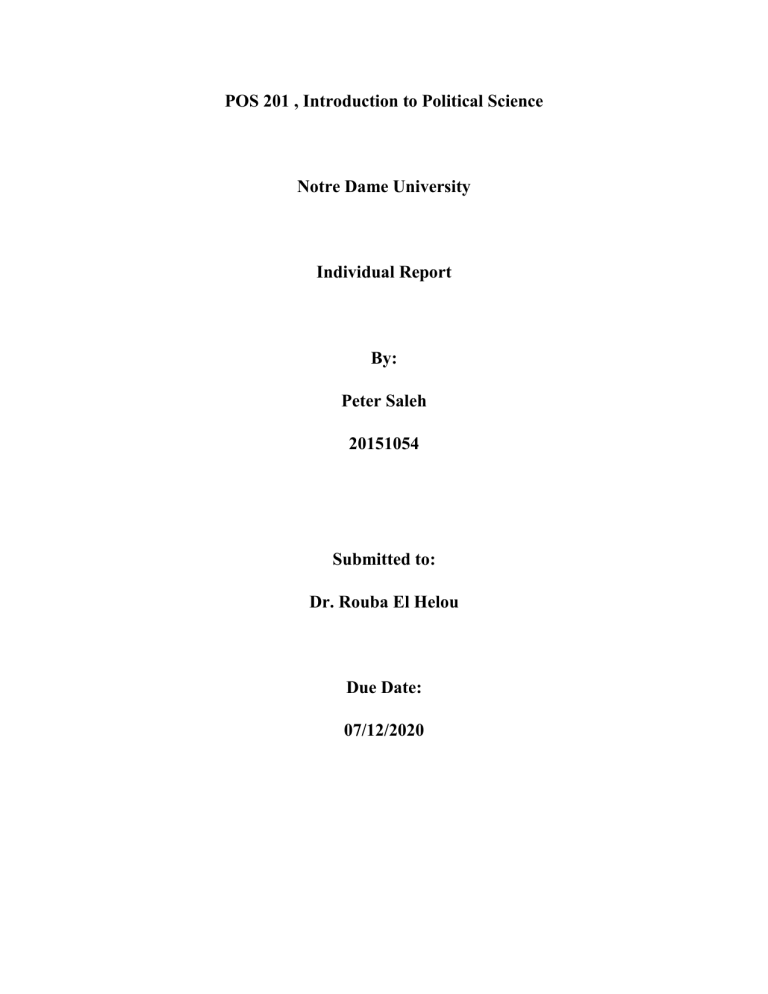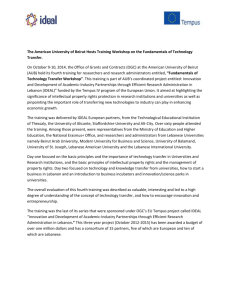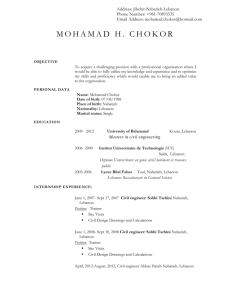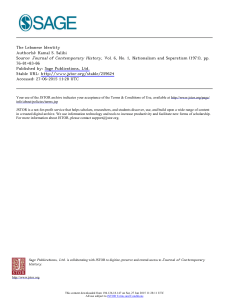
POS 201 , Introduction to Political Science Notre Dame University Individual Report By: Peter Saleh 20151054 Submitted to: Dr. Rouba El Helou Due Date: 07/12/2020 Gender Equality History In Lebanon 1. World History: Gender Equality movements started to rise first in western cultures in the late 19th century, which was basically about allowing women to vote and hold elected office. Moreover, during this phase, a big change happened to women’s property rights and marital status and family matter. 2. History in Lebanon: Lebanon is the country that has the most enthusiastic feminist movements in the Arab region. Lebanon has also been the most liberal country in the Arab world, with a free media that is very conductive to gender equality. Women’s movement in Lebanon started back in the 1920s which established the Women’s Union group that mainly focused on social and cultural issues for women. The real legal changes and gender equality movements did not start until 1953 which in this year they were granted the right to vote and to stand for a seat in the parliament. And later in year 1959 they were granted the equal inheritance for non-Muslim women. In year 1960, foreign women were granted the right to become citizens if and only if they are married to Lebanese men, but in contrast Lebanese women are not able to pass their nationality to their spouses or children even if they are born in Lebanon. In this particular time frame, more political involvement and rights continued to progress. In year 1963, women were granted the right to be elected into local councils. In year 1974 women were granted the right to travel without there husband’s permission. In year 1987 a change in the amendments were made in order for women to receive social benefits. The big emergence of women’s movements rose rapidly just after the Lebanese civil war (19751990) and gained a lot of achievements. For example, in 1993 women were granted the right testify in court in cases that are related to land registry. And later in that year they were granted the right to trade without permission from their husbands. In year 1997, a huge step was taken and the “1981 Convention on the Elimination of All Forms of Discrimination against Women” (CEDAW) was signed and ratified which helped a lot in the development of women’s rights in Lebanon. Following this action, A lot of work was done and a lot of achievements were made up till today. 3. Conclusion: Despite all the work done to achieve gender equality in Lebanon, there is still the need for further reforms since there are still many important issues to solve. One of the biggest problem and weakness in the Lebanese laws is that there no unified civil law. Women’s civic rights, family matters, and gender relations are formally assigned to the registered religion authorities. In Lebanon, we have 18 different recognized sects, so we have 18 different laws and religious courts to handle issues such as marriage, divorce, maternal custody, inheritance, and property rights. Moreover, all of the 18 laws consider men to be the head of the family which give men more rights and prohibit women from them. The most famous problem in the Lebanese law related to gender discrimination is the nationality law which prohibit women from giving their nationality to their spouse and children. This shows a high level of discrimination and violates basic human rights. Due to the complex Lebanese society and the very large number of distinct sects, it requires a lot of work and time in order for everyone to agree to transition from the religious courts and laws to a unified civic codes that ensures gender equality for all citizens.



